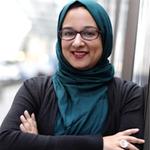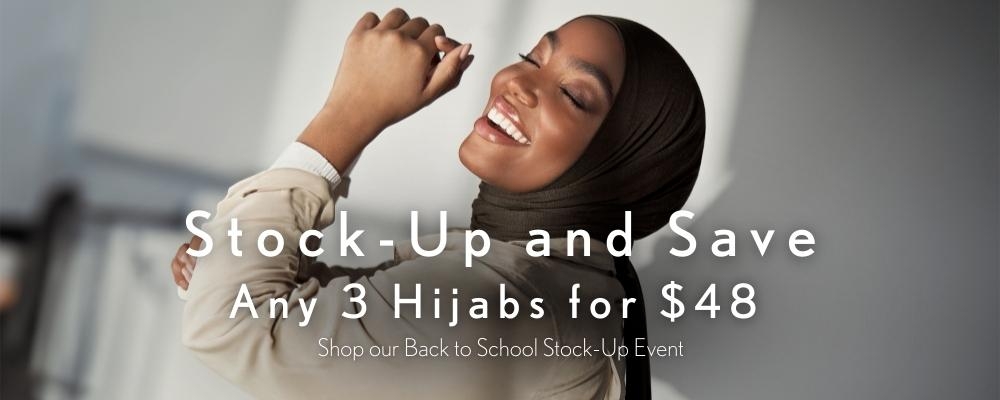Behind the Scenes – How Melanie Picks Chiffon Prints for Tuesday Drops!
Fashion
|
Oct 10, 2019
|
5 MIN READ
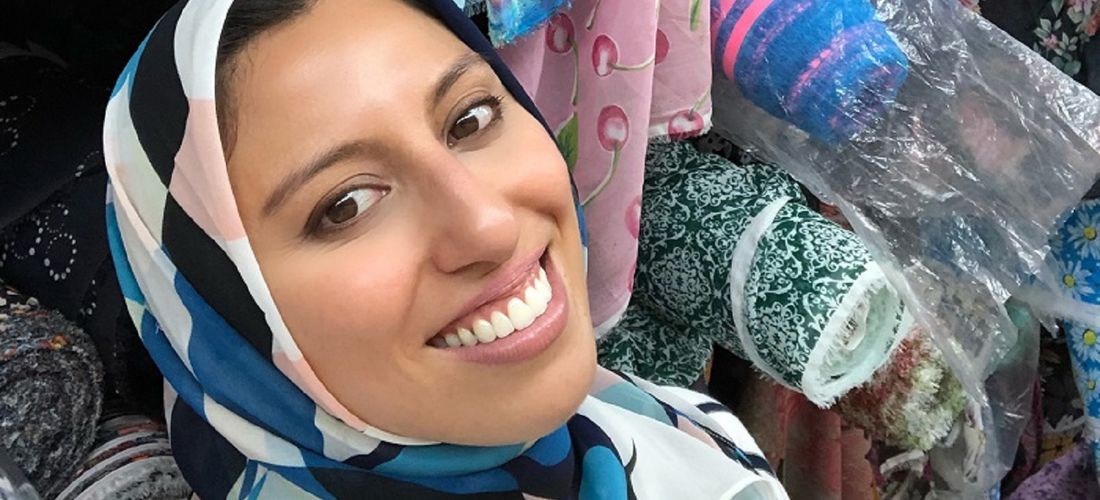
Our weekly Tuesday prints drop is one of our longest-running and most anticipated traditions at Haute Hijab. What does it take to get those carefully curated group of Chiffon Printed Hijabs into your inbox for the picking every Tuesday morning? The process has evolved a lot since Melanie and Ahmed were living in Dubai and shipping prints to Visual Merchandiser Erin Smith in Chicago!
With Melanie just returning from one of her trips to Dubai where she stocked up on prints for the next several months, I sat down with her to find out what the Tuesday drop process was – from picking out beautiful bolts of chiffon fabrics in various Dubai stores and warehouses, to creating the hijabs themselves, to picking out which ones arrive each Tuesday in your inbox. Check out this peek behind the scenes!
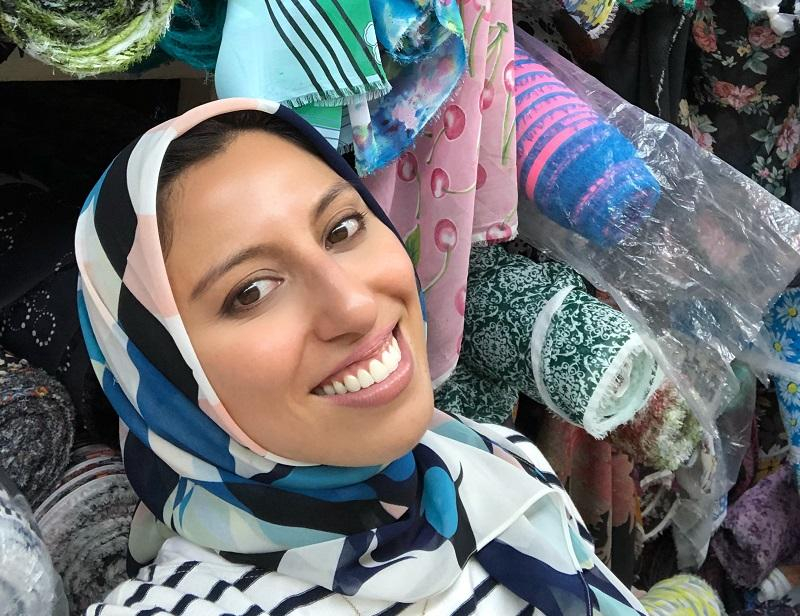
Melanie in Dubai on a recent trip picking out chiffon fabric for hijabs!
How often do you go each year to Dubai? How far ahead are you picking weekly prints? How many get produced from each batch of prints on average?
I pick prints twice a year. In terms of how many prints I choose, we produce anywhere between 30-40 Chiffon Printed Hijabs a month, and we work 6-8 months ahead of time. On this latest trip, I was so lucky that one of our biggest suppliers had his huge containers arrive the day before I came. He told me that because I'm one of oldest customers, he gave me first pick. So I picked up a ton of gorgeous chiffon prints!
In a trip I’ll choose anywhere between 150-300 prints. I know all our prints – I can spot a print from, like, 2012. They become seared in my memory! There are some that look similar, but I can tell if it’s a restock.
Aside from how many I pick, what I pick has a lot to do with the monthly customer experience report from our CX team and our Merchandise Analyst Justine Sarhadi’s merchandising reports. These reports tell me what are the prints that customers say they want and what kind of prints they shop the most – these are the types of prints I know I need to look for. Justine will also look at rates of our existing prints and how they sell, so we know not to keep choosing prints that have become stale.
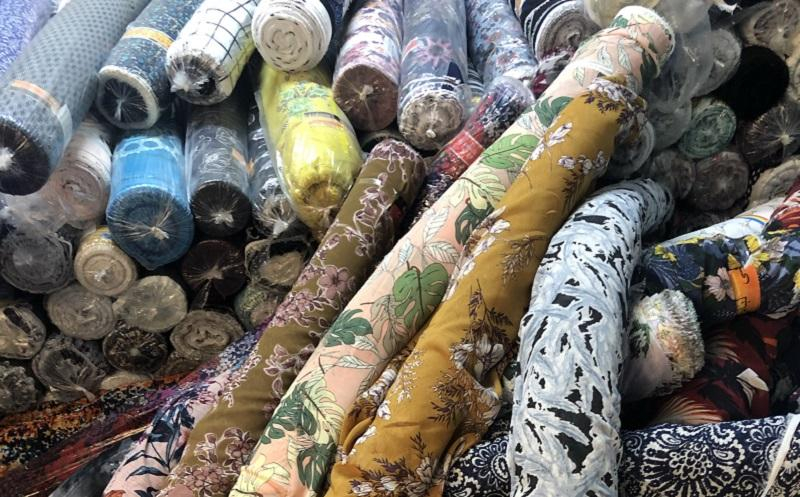
Rolls of chiffon prints in a Dubai warehouse where Melanie picks fabrics for Chiffon Printed Hijabs.
Once in Dubai, take us through the process. Where do you go to pick prints? Do you have certain styles in mind based on the seasons and trends?
I work with about 3-5 suppliers based on their availability. Sometimes their stock is low. Sometimes, like with one of my suppliers on this recent trip, they have a fresh shipment. There are three I mainly work with, and they are Afghani. I’ve been working with them since 2012. They’re so honest and precise with how they work, and they have such impeccable character that I’ve developed a close relationship with them. They don’t cheat me one dirham.
These are young guys who were like 18-19 when I first met them in 2019. I remember them asking me when I walked in (I was about 27), “Where’s your mom?” and I was like, “Where’s yours?" Lol! We’ve worked together for so long and so well that now they call me sister.
I first go to their storefronts in Dubai and choose prints from there. They bring their best prints there. Then I go to their warehouses, and they have thousands of rolls of prints to choose from. I spend about 2-3 days in the warehouses choosing prints.
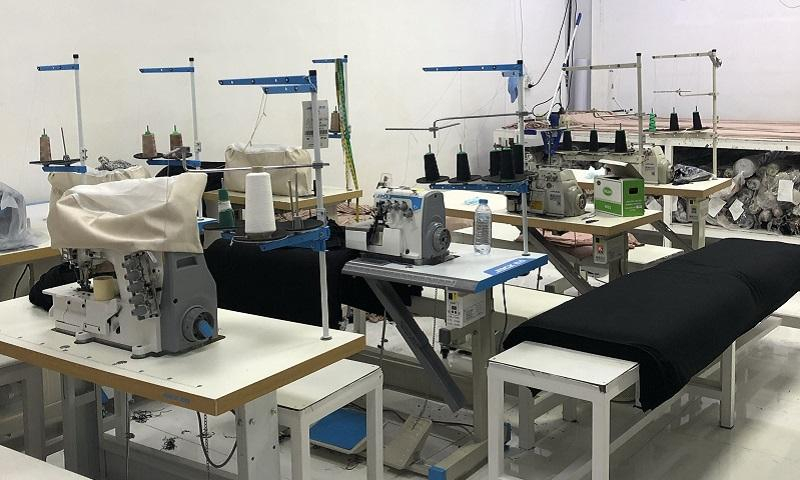
Sewing machines at the Haute Hijab factory in Dubai, where the hijabs are cut, sewn and inspected for quality control.
Talk to us about deadstock. Why do you use deadstock fabric to source HH’s chiffon prints? Our customers always wonder why there is such a limited amount of the Chiffon Printed Hijabs in the Tuesday drops!
Deadstock fabric comes from existing designers and brands that have extra yardage of fabric that they need to dispose of for any number of reasons. That’s why we often have customers saying they bought a dress from, say, H&M and [a hijab from us] they say, this fabric is the same print. These suppliers sell these fabrics to people for a more affordable cost. If they didn’t sell them, they’d go to waste. So, there is a limited amount of yardage in these deadstock fabrics, which means we can only create a limited amount of hijabs.
When we first started this business, we couldn’t afford these huge minimums on [existing rolls of fabrics]. We had to work with deadstock. We’ve continued our legacy of working with jobbers (wholesalers or manufacturers who deal in small lots of goods) for chiffon prints. Jobbers take the extra fabric from designers and sell them to people me like piecemeal.
Once you pick them at the fabric shops, then what happens?
After I choose them, our production facility manager Naseeb Mohammed and his team, with whom we’ve been working with since 2012, grab the fabric and transport it to our factory in Dubai. Their team will create swatches from every single print and ship them to us here, so the merchandising team can decide what goes out every month. Once they decide, they will do a monthly buy [of the fabrics they choose], and those fabrics will get created into hijabs. From there, Erin decides on a weekly basis which hijabs drop each week.

Erin Smith and Justine Sarhadi picking chiffon prints from fabric swatches to be made into hijabs for the Tuesday drop.
How do you pick out the cadence of which prints drops on any given Tuesday? And, how long does it take from you picking them to the prints arriving in a Tuesday drop?
Erin curates each week to provide as much variety as possible – we try to include at least one of the main types of prints like florals, polka dots, animal, abstract, etc., and make sure the collection as a whole looks nice together. We also think about color stories and themes that are on-trend – or that just make us feel inspired! But the main goal is to have a range that appeals to a variety of tastes. We don't want anyone to feel left out!
Because we work ahead of schedule, Naseeb will usually send a ready piece directly to our office or our Texas warehouse for our photography. That whole cycle can be as little as 40 days. If we want it rushed, we could even do it in 30. We have such a backlog of prints that we try to go through all the old prints first.
How did you establish this process?
With the support of an incredible team who have knowledge beyond my own! In the early days when we lived in Dubai, I would choose the prints, and we didn’t have enough capital to even buy a whole roll yet. I’d buy like 20 yards and put them in a big plastic bag and give them to Naseeb at the metro system, and he’d sew them into hijabs and then ship them to Erin. She would do the product descriptions, and we’d get them on the website, sell them and she would ship them out!
It’s mind blowing, where we started to where we are now!
Subscribe to be the first to know about new product releases, styling ideas and more.
What products are you interested in?

